Artist Sandra Arkin’s bas-relief mosaic sign “Art Can’t Hurt You” makes me laugh.
Anyone who has ever made a glass mosaic with tiny details has anointed their work multiple times with blood. Am I right, or am I right?
Sandra says doesn’t draw or make representations of physical objects in her heart usually, but she is pretty adept at making patterns with her printer when she does want an actual image.
I one of her brief emails to me, Sandra said she was more interested in color, pattern, and texture and prefer to do a freeform approach rather than make something that can be recognized. Then she asked tongue in cheek if it was still art if you weren’t concerned about representation.
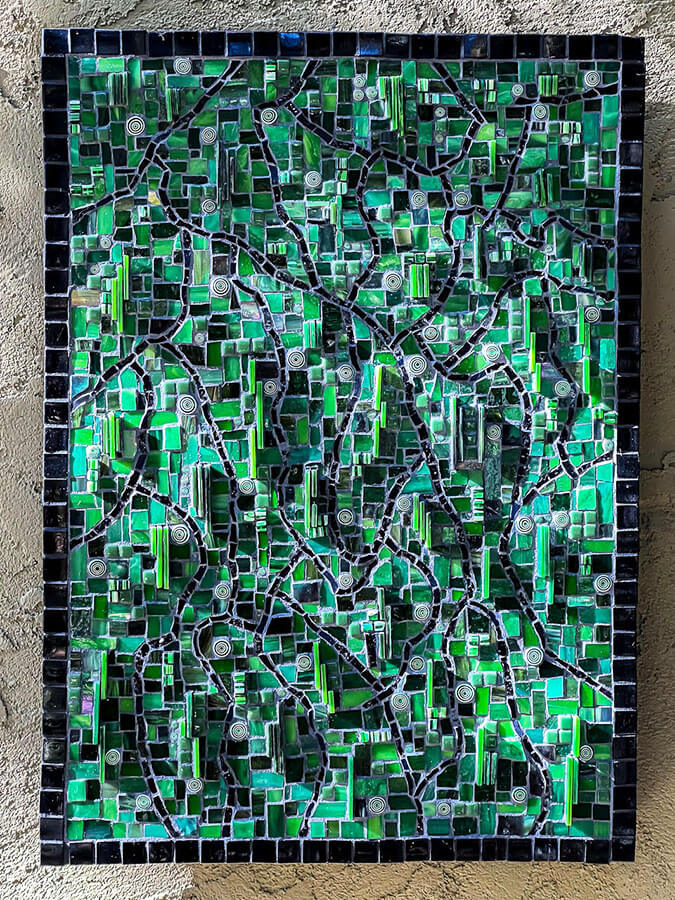
I’ve increasingly become more and more engaged with abstract art over the years, both in terms of making it and studying/appreciating it.
I went from not having any appreciation of it (because I was so obsessed with art as narrative and composition and story) to thinking in terms of the abstract elements and not being satisfied with representational art that is lacking in “painterly flourishes” or other abstract elements added for visual interest.
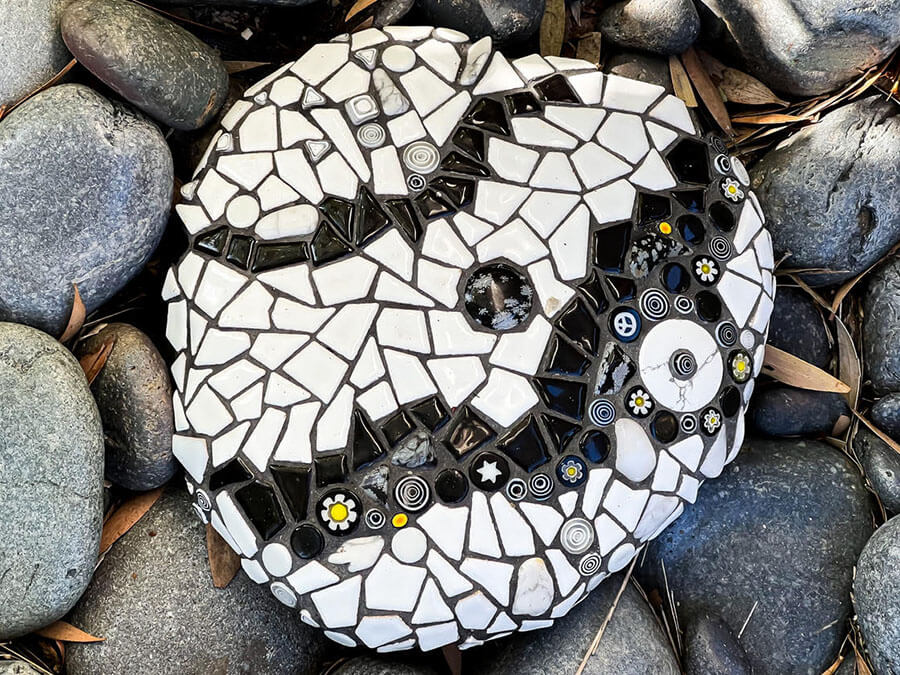
Anyway, I think many people will enjoy seeing Sandra’s work: bas-relief abstract mosaic plaques, mosaic encrusted river stones, and some wooden spheres she recently mosaiced. Also, she made some felt ornaments of some of my mosaics.
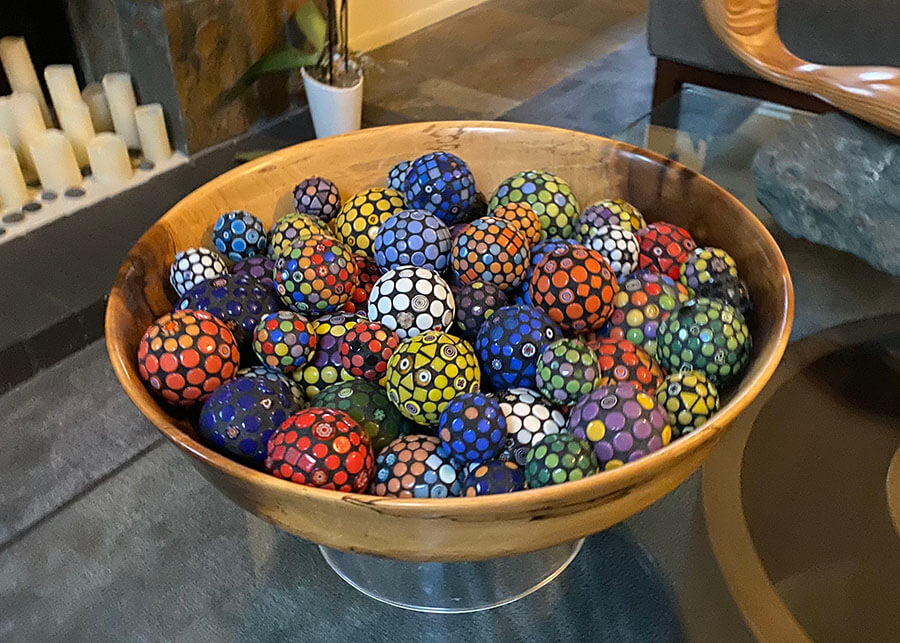
TIP: You can use hard polystyrene spheres as a cheaper alternative to wooden spheres, and you can order those in sets or in bulk from Amazon, etc.
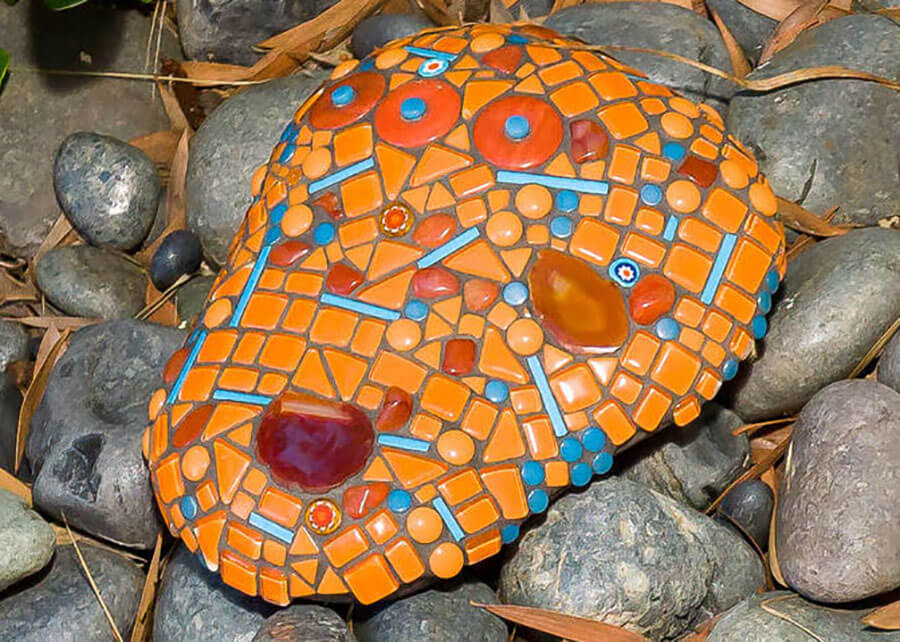
Stones As Mosaic Bases
For outdoor mosaics, hard durable varieties of stone makes a good mosaic backer (Avoid crumbly sandstones and brittle slates.)
Large River Pebbles. You can get these at lawn and garden centers and landscaping stone stores, or collect them in the field or even your own yard in some places. And not necessarily near a creek or river. Thanks to glaciers, there are rounded pebbles all mixed in the soil through a lot of the upper Midwest and Canada.
TIP: The stones you mosaic don’t have to be rounded river stones.
There are uses for other stone shapes:
Flat shingles and flagstones are great for small mosaic plaques with irregular edges that look like fragments from an ancient Roman mosaic.
The only caveat is that some types of slate and shingle stones are bad about flaking or are fragile. Observe other pieces of the same type stone and see how they are weathering and how they withstand impacts and drops. Piles at the stone store tell you a lot.
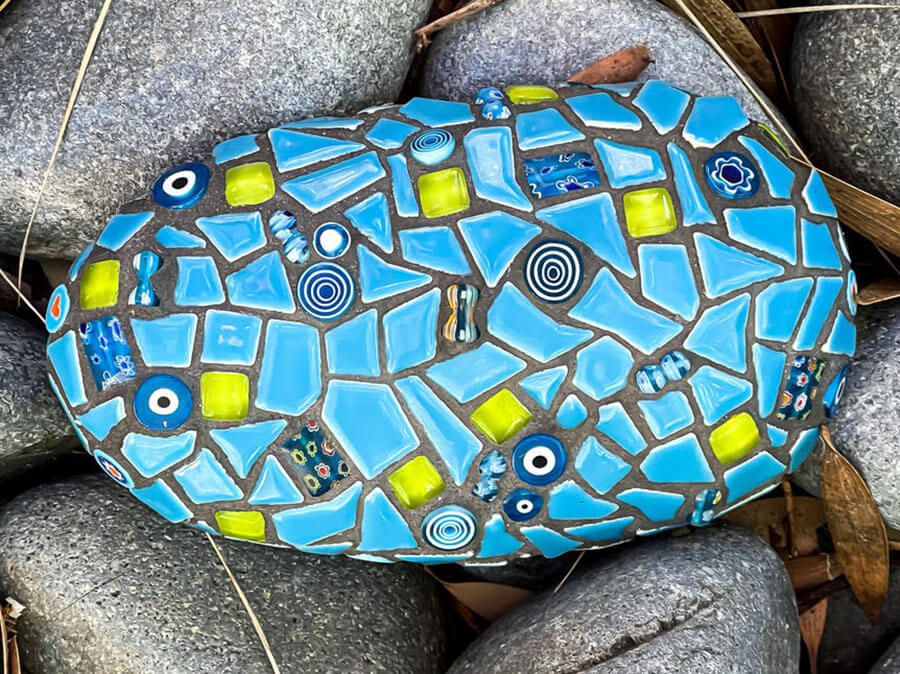
Angular Chunks like mountains or irregular pyramids. These are best in my opinion when you want to mosaic on one face and leave the rest of the stone bare. The face has a distinct edge.
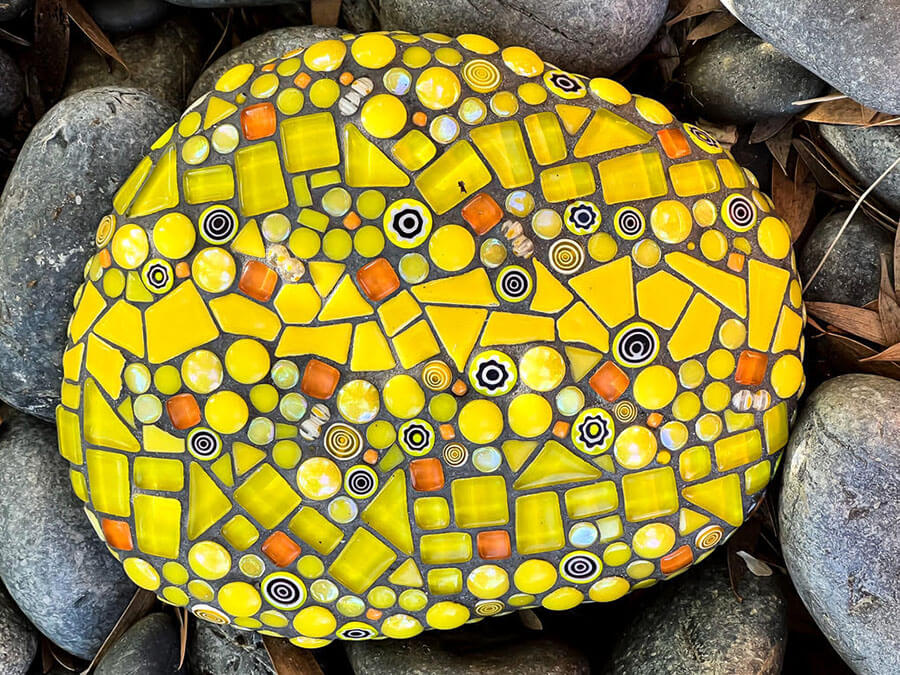
Irregular and Broken. You don’t have to mosaic the entire stone. Consider natural indentions and broken surfaces as places that can hold or “frame” a mosaic.
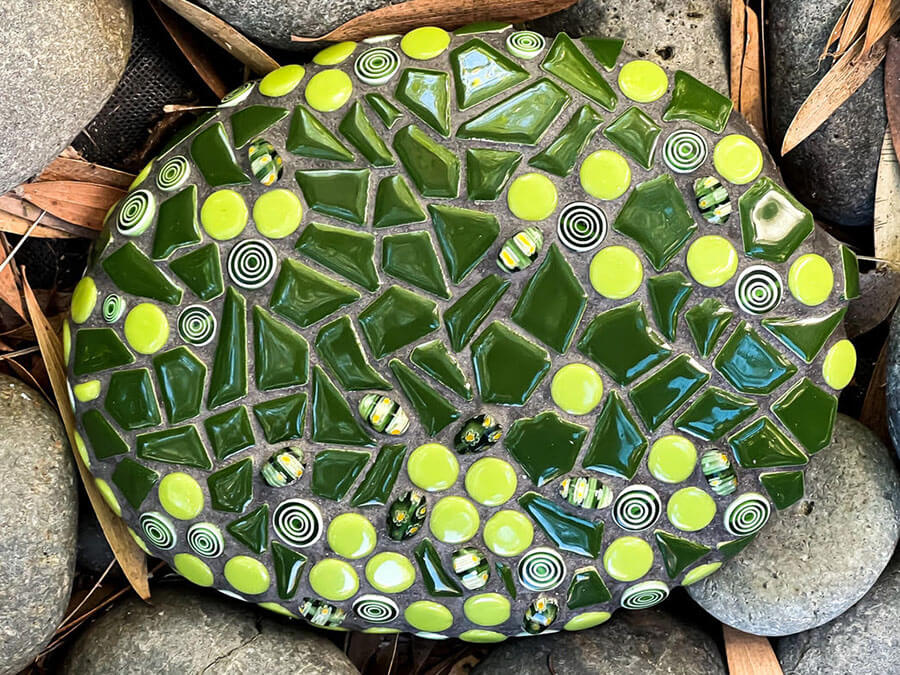
Combined With Mortar. You can make figurative sculptures by mortaring stones together using thinset mortar.
With mortar, you can make quick and simple stone sculptures in a single session that are ready for mosaic the next day.
You can also make marginally more complex shapes if you work in a series of sessions that build up the “frame” of the shape until the last session is just “plastering” the surface with more mortar.
If your shape is complex or has long armatures, a wire-frame concrete sculpture is preferred to mortared stones, but you can mix the wire-frame and mortared stone techniques in the same installation as needed. It’s all going to be covered in mosaic.
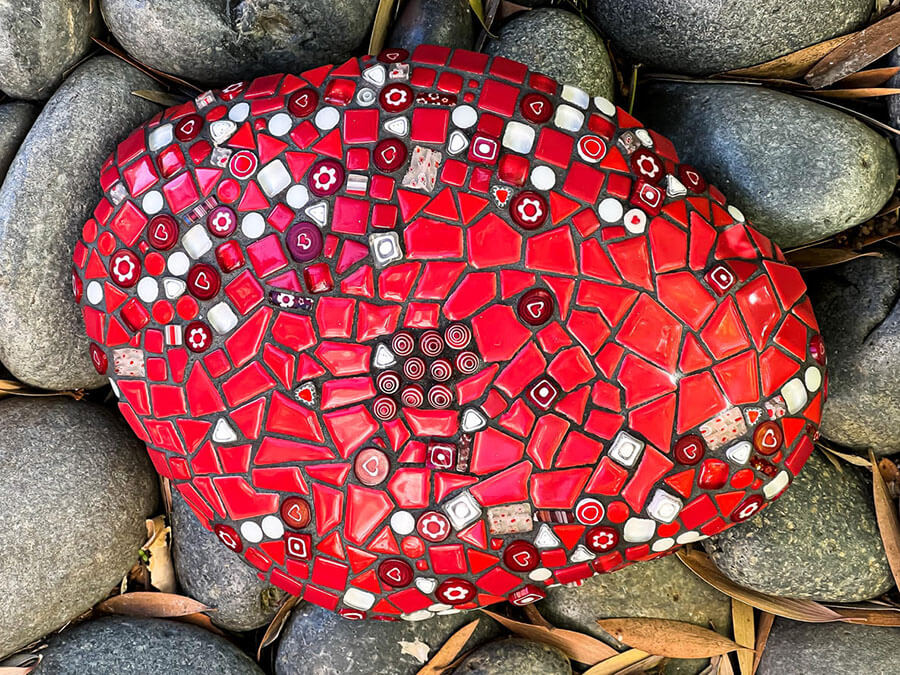
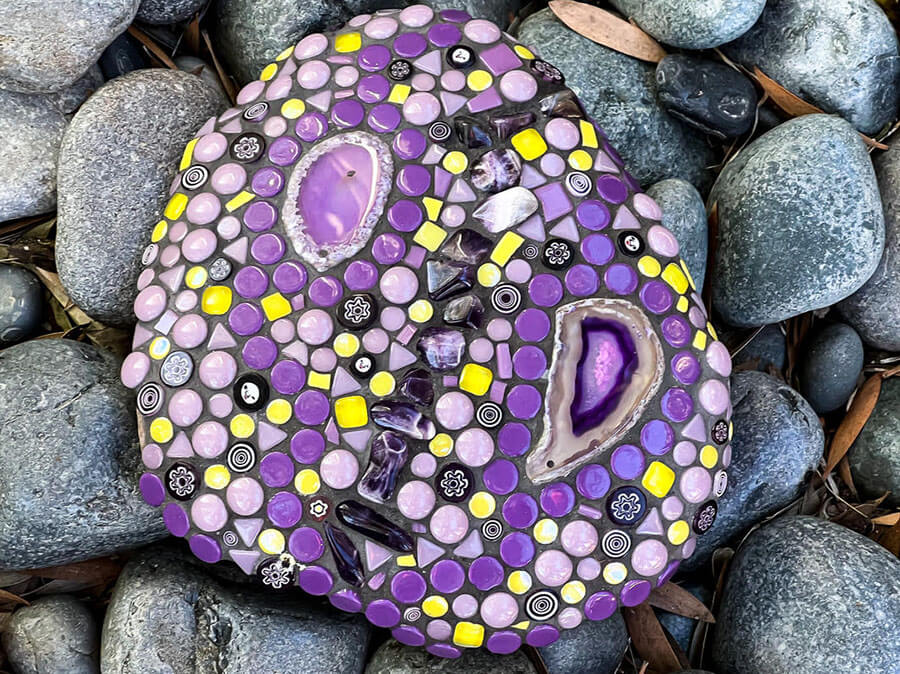
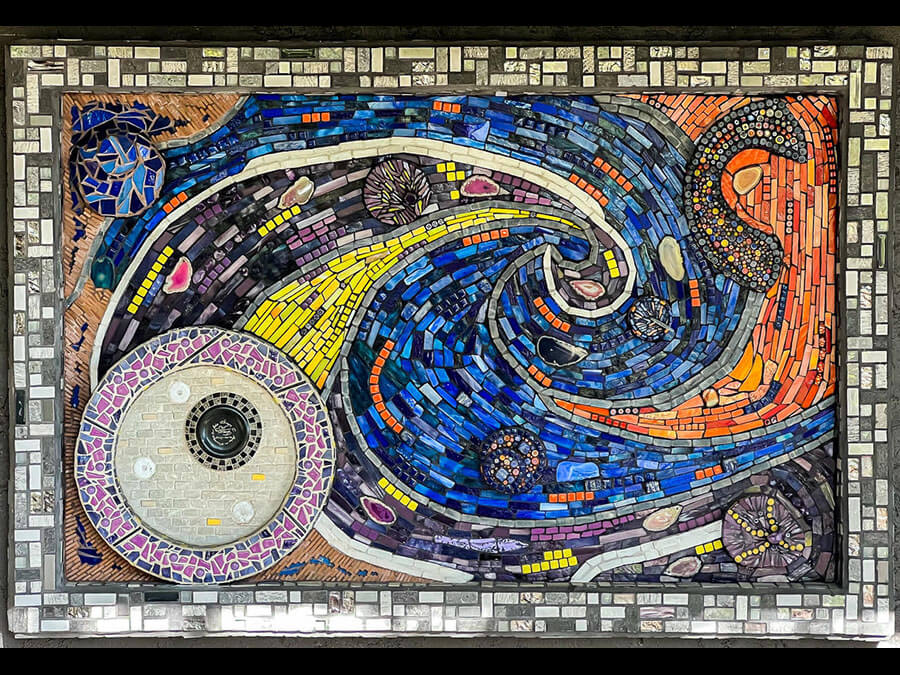
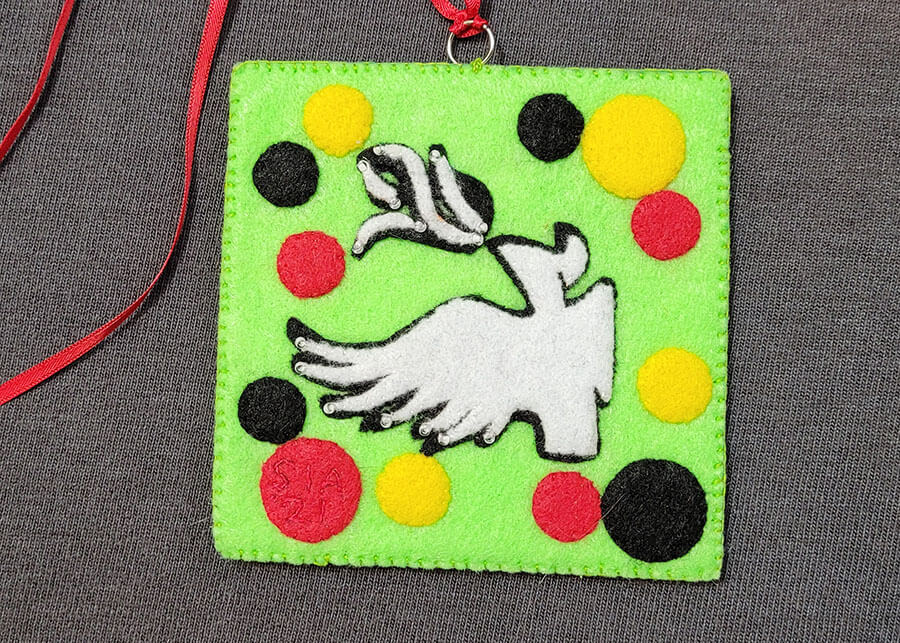
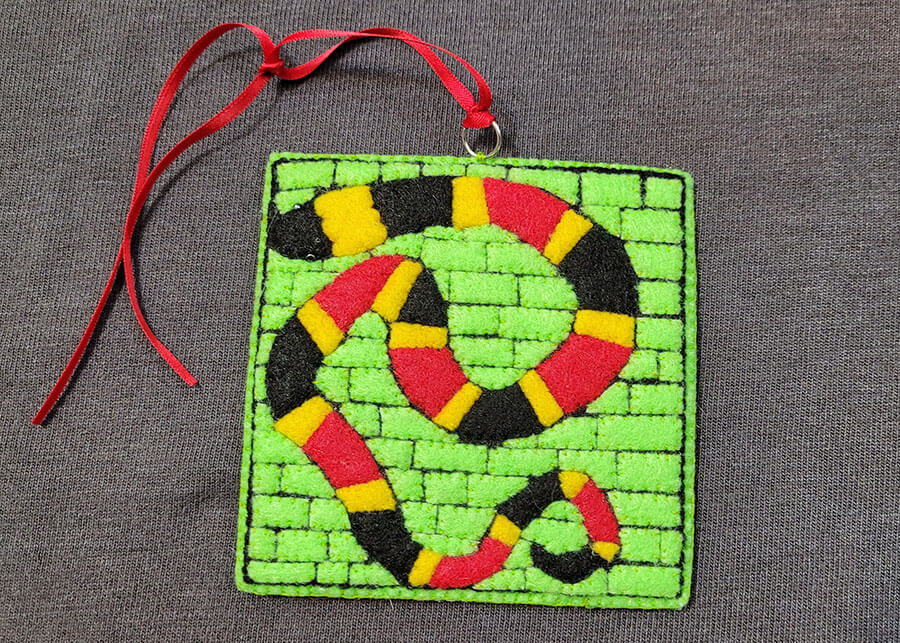
Felt Ornaments
I like the ornaments Sandra made me! These are opposite sides of the same ornament. The images are adaptations of some of my mosaics, and they are sewn felt.

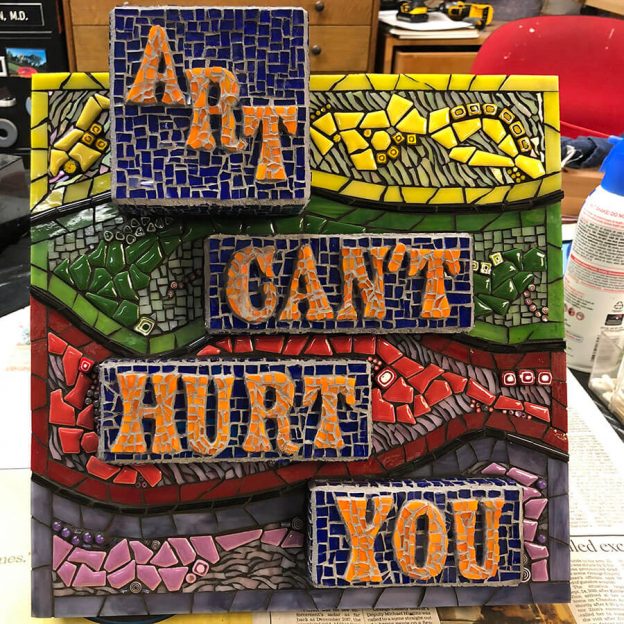
Leave a Reply